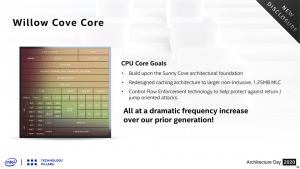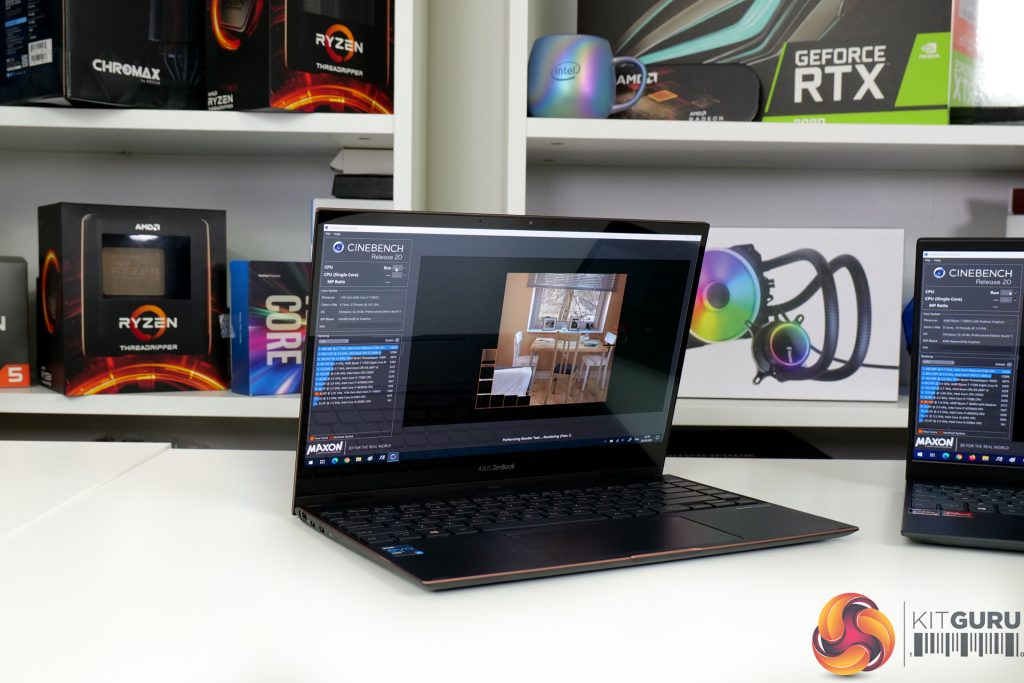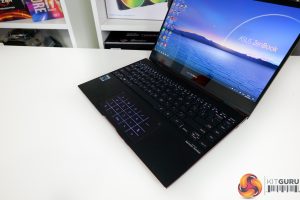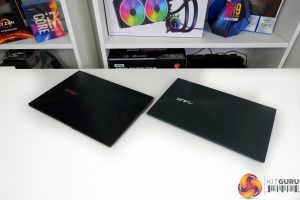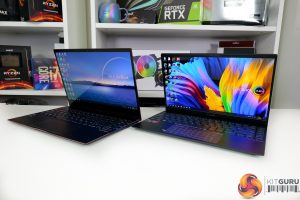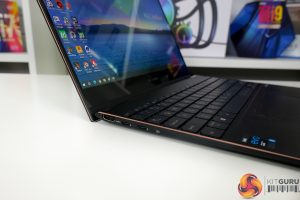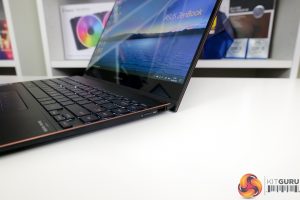Intel’s 12-28W-class Tiger Lake ‘U-series’ processors are much of a known entity at this point in time. However, we have not had too many opportunities to examine the popular Core i7-1165G7 in its 12W TDP-down form, with many gaming- or performance-focussed laptops that come through our labs opting for the 28W TDP-up power mode instead. This gives us an ideal comparison opportunity – 12W Tiger Lake versus 15W Ryzen 5000U.
The Core i7-1165G7 is not technically Intel’s highest-end low-power Tiger Lake offering. However, it does seem to be the more popular of the Core i7 options available. This 10nm SuperFin manufactured chip features 4 cores and 8 threads with 12MB of Intel Smart Cache. The maximum turbo frequency is 4.7GHz, though the quoted nominal frequency is 2.8GHz at 28W TDP-up power mode and a lowly 1.2GHz at 12W TDP-down mode.
Memory support from the Tiger Lake platform is comparable to AMD’s Ryzen 5000U approach; you get access to standard DDR4-3200 and also LPDDR4X up to 4267MHz.
Two areas where Intel clearly has the edge over AMD are Thunderbolt 4 support and PCIe connectivity. That is because Tiger Lake is running PCIe Gen 4 whereas AMD opts for PCIe Gen 3 on its Mobile chips. And Thunderbolt seems to be basically non-existent on AMD platforms but well-utilised with Intel.
Intel will quote AVX-512 instruction set support and its DL Boost technology as further benefits. However, we are yet to see convincing use cases for these technologies that realistically align with slim-and-light laptops.
Another area where Intel is particularly strong is in terms of on-chip graphics. The Iris Xe iGPU features 96 execution units and clocks up to 1.3GHz maximum. Graphics output and resolution support is excellent with up to 8K60 over DisplayPort being a possibility, laptop dependent of course. And the inclusion of Quick Sync Video support continues to prove worthwhile if your video editing or streaming software can take advantage of the acceleration.
If we now take a brief overview of the unit itself, the ASUS ZenBook Flip S OLED UX371 looks to be geared towards prosumers who value portability and the 2-in-1 touchscreen laptop design.
The main components are an Intel Core i7-1165G7 CPU operating in the 12W TDP-down mode by default. ASUS also equips 16GB of LPDDRX-4267MHz memory and a 1TB WD SN730 SSD. A 67Whr battery is used to power the system and the included charger is a 65W USB-C version.
ASUS uses a sleek, well-built chassis that measures a little over 30cm wide and 21cm deep, with a thickness of around 1.19 to 1.39cm. The materials feel premium, yet the laptop is still incredibly lightweight at 1.2kg. That sturdiness and low weight makes it incredibly easy to manage single-handedly both in laptop mode and in the flip mode.
Speaking of flip mode, the touch-capable screen rotates all of the way back to lie flat against the backside of the laptop. This makes it ideal for use as a tablet or a drawing device thanks to the stylus support.
The glossy, touch screen display is a stunning 13.3” 4K OLED panel that features 100% DCI-P3 support and up to 400 nits of brightness. ASUS quotes a screen-to-body ratio of 80% and highlights stylus support that will appeal to artists or creators.
The IR camera supports Windows Hello and acceptable video quality.
Connectivity comes in the form of dual Thunderbolt-4 ports, full-sized 4K60-capable HDMI (ignore ASUS’ suggestions of HDMI 1.4 – we tested 4K60 successfully), and a single 5Gbps USB 3.2 Gen 1 Type-A. No card reader is disappointing, and ASUS bundles adapters for Ethernet and 3.5mm audio.
 KitGuru KitGuru.net – Tech News | Hardware News | Hardware Reviews | IOS | Mobile | Gaming | Graphics Cards
KitGuru KitGuru.net – Tech News | Hardware News | Hardware Reviews | IOS | Mobile | Gaming | Graphics Cards




